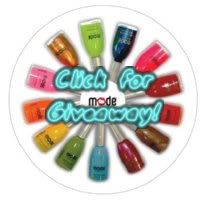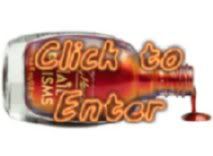
Now, I want to impart the wisdom that I have learned the hard way to you all! Some of the wisdom below was self-realised, but most of it was learned from lots of research! The information below is also a guide not only for the purchase of flatbacks, but for beads too.

Shape & Cut – Swarovski crystals are generally regarded as the finest machine-cut beads in the world. Because of the unique and patented computer generated technology used, each crystal is cut to precision, resulting in crystals perfectly uniform in height, slope and width. Each facet juncture meets at precisely the same point, and when you line them up, it is possible to spot fakes with the naked eye if the edges and corners do not meet. The facet junctures inside the crystal will also always point upward.
Swarovski also create the only stone to have 14 facets (namely the 2028 Xillion) compared with 8-12 from many other makers.
Another point that I have noticed in the imitation flatbacks that I purchased, is that the flat foiled side of the stone is not perfectly flat, or may have dimples, or may have little protrusions – like they have been “popped out” of a sheet of acrylic.
Swarovski Elements are precision cut for maximum brilliance, each cut designed to capture and reflect the maximum amount of light, inferior imitations are usually noticeable when compared to the real deal!

It's obvious which is the fake right? Simply observe the sharp and precise edges of one bead to tell the difference!

Clarity & Colour – Rhinestones are made of lead crystal, glass or acrylic. Swarovski elements are made from lead crystal. Korean and Czech extra grade stones are made of glass and are not as bright or brilliant, and acrylic stones are widely available and cheap but they will not sparkle like glass and are not comparable at all to lead crystal. Swarovski elements have a depth of colour not matched by even its closest competitors, in some case the difference is small, but it is still noticeable. While normal crystal glass contain only 12-28 % lead oxide to increase light refraction, Swarovski contains approximately 32% lead oxide. This increased lead content refracts light more efficiently, hence adding more luster and sparkle to each crystal bead.
Swarovski quality control ensures that each crystal has a consistency in colour and clarity, so impurities that might find their way into other crystals, like air bubbles, should not be present if you are looking at a genuine Swarovski crystal.
In order to create a crystal that allows light to refract in a rainbow spectrum, Swarovski coats some of its crystals with special metallic chemical coatings. Aurore Boreale, or "AB", is one of the most popular coatings, and gives the surface a rainbow oil slick appearance. The genuine Swarovski AB finish crystals have a smooth and uniform coating. Watch for swirl marks or scratches on the surface of the crystal as these imperfections are a sign that the Swarovski vacuum processing was not used. The surface of an inferior product will also appear oily.
A genuine crystal will stand out from the cheap knock-offs every time, simply by the way it sparkles!

This bead has a very obvious air bubble - proving that it is a fake! Sometimes you will find lots of little air bubbles, this too is not the genuine article!

The AB finish on this bead shows another glaring flaw that would never get past Swarovski QC!

Have a look at cut, colour and finish - gorgeous isn't it!? This is what you want your beads to look like!

This is what you want your flatbacks to look like - sharp, smooth and brilliant! And no - this is not trick photography, they actually look like this!
Weight - Swarovski is made of one of the highest lead contents of any crystal bead made, approximately 32% lead, so they will weigh something, and each size will have a specific weight. Imitations will simply not weigh as much as the real thing! If you don't have a gram scale, that's ok, you should be able to feel the weight difference!
General Clues –
Colour Names - This clue might seem a little odd, but the crystal colour names are specifically chosen by Swarovski and are never generic names like blue, red or green. Look for colour names like Hyacinth, White Opal or Smokey Quartz. If you are unsure of a colour name, you can check Swarovski colour charts to make sure the colour actually exists! Beware of "chili-pepper," "brandy" or "rose gold" as these are not official Swarovski colours.
Foiled Backing – Make sure there is a silver backing on flatbacks. In my experience shiny silver backed crystals are fake, and matte silver backed crystals are genuine, however, I have not found any official information to support this theory, it is just what I have seen in my own collection.
Official Packaging – If you are buying larger quantities of crystals that don't require the seller to break up larger packages, then make sure you receive them in a sealed, official Swarovski package. An easy way to recognise official packaging is by the hologram that appears on the package, but also the quality of the packaging, and the name Swarovski – spelled correctly!
Loose Beads – When buying beads, beware of them being sold on a string. Swarovski crystals are all sold loose and by weight, not quantity.

This is an example of a colour chart - they are a dime a dozen online!

This is a matte silver foiled back - beware if it is shiny!

Just one example of official packaging. Take note of the hologram!

A second example!
Buying – Most online sellers will display approved seller badges on their website, however beware of people illegally displaying Swarovski logos. If you are buying on eBay check the following before buying:
1. Check the actual feedback given as well as the feedback percentage.
2. Check out the Sellers Returns Policy to ensure that if you do make a duff choice, you can return it.
3. Check the wording of the listing to ensure that it says “Genuine” Swarovski crystal – although this is not a solid guarantee.
4. If a supplier on eBay is offering a Swarovski Gift Box and Certificate with the jewellery or gems - beware! Unless it is a one off gift they no longer want.
Finally, check the seller’s receipt. If the beads you have purchased are fake, the seller is not likely to specify what the item is that you purchased!

Just a little sample of the official Swarovski logo!
Whew! So there you have it ladies! All of the info that I could offer, so that you all could be more aware of those dodgy imitations! I hope my guide helps you make more informed decisions when it comes to buying, so that you don't end up ripped off like I did! I have plenty of genuine crystals that I am happy to swap or sell, so please contact me if you are interested in a reliable source - or I'd be happy to point you in the right direction for larger quantities! Have fun shopping for what all of us girls simply can't resist... cause diamonds are a girls best friend!




Great article. I've studied diamond grading and you've really done your homework! I look forward to future posts on your blog.
ReplyDeleteMarsha
Thank you! :)
ReplyDeletePlease post more articles about how to verify the genuine and imitation Swarovski Beads. Please help the consumer to buy a quality item not the fake.
ReplyDeleteSwarovski use the optical glass BK7 of Schott Germany. The genuine materials of Swarovski are NOT Crystals. It is old and non-eco glass. BK7 glass is out of production, because the lead technology for moulding is dirty. The new Schott glass is N-BK7 (leadless). So, Swarovski looks great, but material is not something special. It is only cheap optical glass, it is not space technology. They just have good marketing.
ReplyDeleteWhich direction would you point me in for about 2000 aquamarine ab ss9 flatbacks?
ReplyDeleteI love the article! VERY helpful. I recently just found a reliable online store to buy all Swarovski Crystals. www.creativecrystal.com. I hate buying online so I always call them and they are extremely helpful. They sell nothing but Swarovski hot fix so I only go to them when i want to get hot fix crystals and supplies.
ReplyDeletedarn! My crystal clam is a fake! Thanks for publishing this. Lx
ReplyDeleteHello. The article is very useful. Is there a device or something like that to check is a Swarovsku crystal is real? Like the quantity of lead..maybe the light..weight..etc.
ReplyDeleteThank you.
Thank you for this article. I was researching this topic because I started a project with Swarovski 2058 flatbacks (the one that is replacing 2028) in the Light Colorado Topaz color. I bought them at a local bead store in Los Angeles. Then I went to Bohemian Crystal in downtown L.A., where you can supposedly get these stones much cheaper, and I was shocked to see that the Light Colorado Topaz they were selling was a much darker color. I honestly don’t know if one or the other was fake, but I had to go back to my original, more expensive source because I had already started my project and needed them to match. But now I will be much more vigilant!
ReplyDeletethank you, you have just saved me £163 its so hard to tell exactly what your buying because its so easy to fake.
ReplyDeleteI was sorting some of my swarvoski beads under the florescent light, pulled out all those I thought were blue shades. Then I moved to the other room and was using a regular incandescent type light bulb, there were some purple beads mixed in that could not been seen under florescent light. Gave me a great idea for a project. Beware on ebay. many fake beads. Swarvoski actually regulates the amount of beads sold, they stop producing one type before making another. The weight of the bead is the best way to tell. Worth buying a gram scale.
ReplyDeleteThe backing of the crystals is not always an indicator of their authenticity. While *most* Swarovski have a silver matte back, they do have colours (Iridis, for example) that come with a shiny silver backing. :-)
ReplyDeleteI have bought a few poor quality beads & pendants in the past, but through research hasve found many excellent quality K9 crystal pendants and beads of all shapes from China at a very reasonable rate.
ReplyDeleteI want to buy a watch found here seems pretty good, do not know to pick the help of everyone to the point.
ReplyDeleteswarovski-bangles
Swarovski hotfix have a soft coppery pinkish backing with clear glue. Non hotfix have a matte silver. Fake hotfix have black or grey blobby glue on the back -thats only from my experience :) x
ReplyDeleteSwarovski hotfix have a soft coppery pinkish backing with clear glue. Non hotfix have a matte silver. Fake hotfix have black or grey blobby glue on the back -thats only from my experience :) x
ReplyDeleteWhat a fantabulous post this has been. Never seen this kind of useful post. I am grateful to you and expect more number of posts like these. Thank you very much.
ReplyDeletenecklaces for women